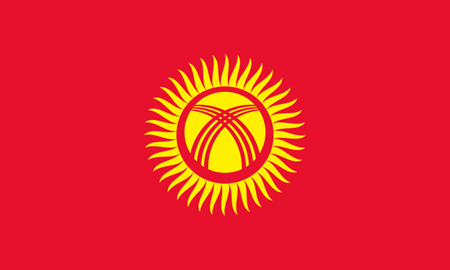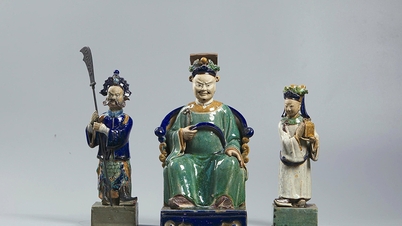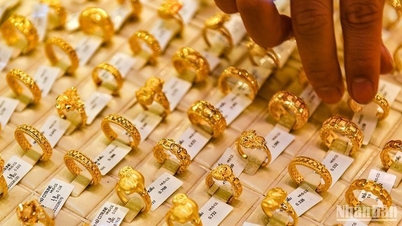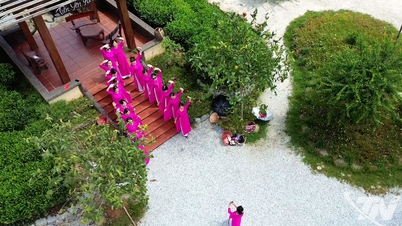
Kyrgyzstan's parliament has just passed a decision to change the national flag.
The national flag of Kyzgyzstan is a yellow circle on a red background. There are six red stripes intersecting the yellow circle and the edge of the yellow circle is 40 winding yellow strips. These short yellow strips are separated from the remaining yellow area by a red circle. For a long time, this national flag image has been chosen by the Kyzgyz people because the image of the national flag is considered a symbol of the sun on the steppe. The six red stripes cutting across the yellow circle area symbolize the image of the traditional tents of nomadic people on the steppe. This explanation sounds very reasonable and easy to understand for outsiders. According to that, the national flag very specifically and clearly represents some of the characteristics and identity of the country of Kyzgyzstan.
According to the Kyzgyz people, the sun is very important to the lives of the people, very attached to them and gives them many things. They consider the sun as a source of their life and the embodiment of prosperity, wealth, abundance and happiness. Until now, countless years have passed and it has been like that for the people of this country and in this country.
Now, the Kyrgyzstan Parliament has decided to change the appearance of the national flag. Everything remains the same except for the 40 yellow stripes that are waving on the outside. In the new national flag, they are no longer waving but straight and pointed. The parliamentarians who argued for this change said that the national flag must be changed to avoid being understood that the image on it is not the sun but a sunflower. The country may have a national flower, but the sunflower is not the sun and cannot replace the sun in the perception and expectation of a symbolic image of prosperity and development. The difference between the old and new national flags is very small, so small that those who do not pay attention and are noticed may not even distinguish it at first glance, but the meaning is completely different.
Some people think that the deputies are too superstitious. Others say that they are so spiritual that they are fanatical. There is also no shortage of people who sympathize with the idea of “changing the national flag to open a new era” for Kyzgyzstan. Whether it is right or wrong, agreeing or disagreeing depends on each person’s perception and interpretation.
From a cultural and historical perspective, this change in the national flag must be evaluated from a different perspective. The question is whether the new national flag now represents the image of the sun, or whether it has always been a sunflower, or whether the old national flag still represents the image of the sun but is easily misunderstood as a sunflower. If these questions cannot be answered, it will certainly be inevitable that the country's cultural history will have to be reexamined, and even rewritten. The desire for a new period of prosperous development for the country is very legitimate, but national history, culture and society do not suddenly appear but have a development process, have origins and roots, have identity and characteristics.
Therefore, the change of the national flag for Kyzgyzstan, in name only, is an amendment to help clearly distinguish between the sun and the sunflower, but in essence, it is a political decision that creates a special milestone in history, culture and society.
THUC LINH
Source



![[Photo] General Secretary To Lam attends the 18th Hanoi Party Congress, term 2025-2030](https://vphoto.vietnam.vn/thumb/1200x675/vietnam/resource/IMAGE/2025/10/16/1760581023342_cover-0367-jpg.webp)

![[Photo] Many dykes in Bac Ninh were eroded after the circulation of storm No. 11](https://vphoto.vietnam.vn/thumb/1200x675/vietnam/resource/IMAGE/2025/10/15/1760537802647_1-7384-jpg.webp)

![[Photo] Conference of the Government Party Committee Standing Committee and the National Assembly Party Committee Standing Committee on the 10th Session, 15th National Assembly](https://vphoto.vietnam.vn/thumb/1200x675/vietnam/resource/IMAGE/2025/10/15/1760543205375_dsc-7128-jpg.webp)























![[Video] TripAdvisor honors many famous attractions of Ninh Binh](https://vphoto.vietnam.vn/thumb/402x226/vietnam/resource/IMAGE/2025/10/16/1760574721908_vinh-danh-ninh-binh-7368-jpg.webp)





































































Comment (0)